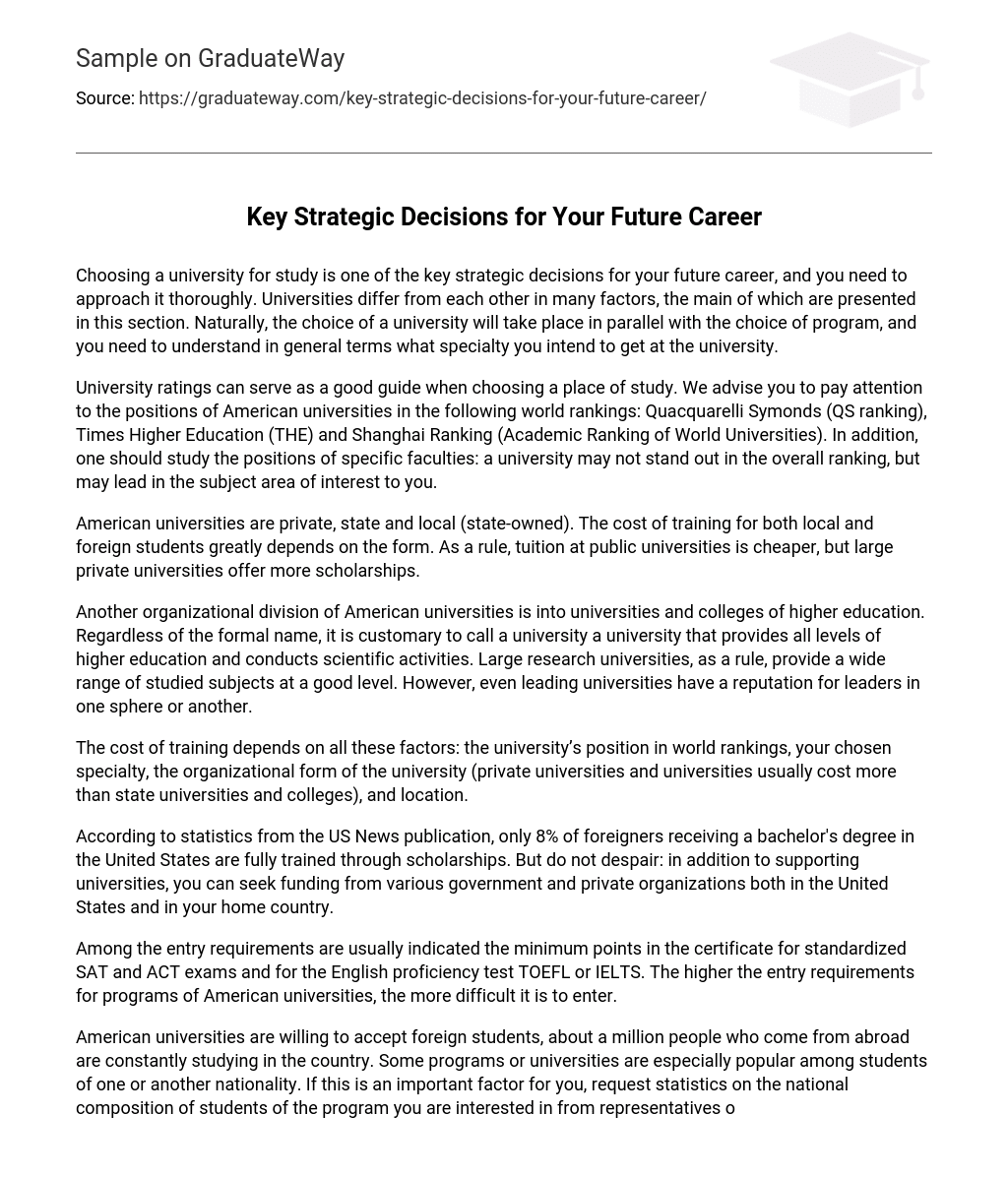Choosing a university for study is one of the key strategic decisions for your future career, and you need to approach it thoroughly. Universities differ from each other in many factors, the main of which are presented in this section. Naturally, the choice of a university will take place in parallel with the choice of program, and you need to understand in general terms what specialty you intend to get at the university.
University ratings can serve as a good guide when choosing a place of study. We advise you to pay attention to the positions of American universities in the following world rankings: Quacquarelli Symonds (QS ranking), Times Higher Education (THE) and Shanghai Ranking (Academic Ranking of World Universities). In addition, one should study the positions of specific faculties: a university may not stand out in the overall ranking, but may lead in the subject area of interest to you.
American universities are private, state and local (state-owned). The cost of training for both local and foreign students greatly depends on the form. As a rule, tuition at public universities is cheaper, but large private universities offer more scholarships.
Another organizational division of American universities is into universities and colleges of higher education. Regardless of the formal name, it is customary to call a university a university that provides all levels of higher education and conducts scientific activities. Large research universities, as a rule, provide a wide range of studied subjects at a good level. However, even leading universities have a reputation for leaders in one sphere or another.
The cost of training depends on all these factors: the university’s position in world rankings, your chosen specialty, the organizational form of the university (private universities and universities usually cost more than state universities and colleges), and location.
According to statistics from the US News publication, only 8% of foreigners receiving a bachelor’s degree in the United States are fully trained through scholarships. But do not despair: in addition to supporting universities, you can seek funding from various government and private organizations both in the United States and in your home country.
Among the entry requirements are usually indicated the minimum points in the certificate for standardized SAT and ACT exams and for the English proficiency test TOEFL or IELTS. The higher the entry requirements for programs of American universities, the more difficult it is to enter.
American universities are willing to accept foreign students, about a million people who come from abroad are constantly studying in the country. Some programs or universities are especially popular among students of one or another nationality. If this is an important factor for you, request statistics on the national composition of students of the program you are interested in from representatives of the university.





